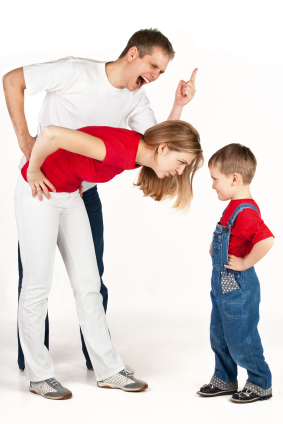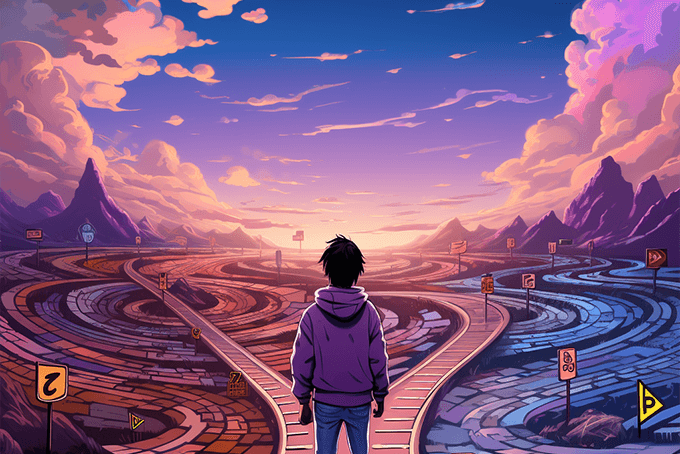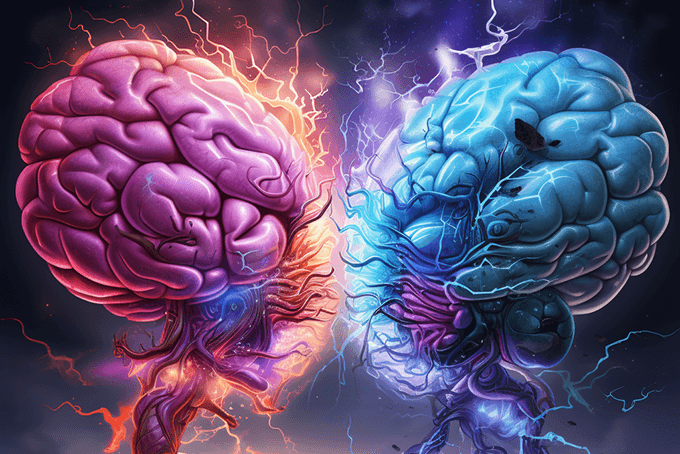Imagine walking to the park with your five-year old daughter. At some point she breaks free from holding your hand to chase after a ball that another child has kicked in her direction. In her excitement to retrieve the ball, she steps off the sidewalk and into the street where there is oncoming traffic. If you’re like most parents I know, you will immediately yell, grab her by the arms, and scold her severely for her reckless and unsafe behavior. As you try to emphasize the importance of how potentially life-threatening and perilous her actions could have been, your face is getting redder, your voice is getting louder, and your squeeze is getting tighter. Can you imagine this scene?
Imagine you’re a first grade teacher with a class of twenty-four students. One child seems determined to see just how many objects he can get into his mouth at one time. Much of your day is spent monitoring Johnny who has crammed numerous markers, crayons, puzzle pieces, and other small object into his mouth. You are genuinely frightened for this child as well as frustrated that too much of your time is spent trying to keep Johnny from choking. You have tried every strategy you know, including threatening, yelling, isolating, removing him from the group, and keeping him close by your side – all without success. You are becoming a screaming, threatening maniac. Not only are you not succeeding with Johnny; you can also see by the look on the other children’s faces that you are frightening them. Can you feel your anger and frustration?

Imagine greeting your teenage son as he returns home well after 3:00 AM, three hours later than the agreed upon curfew. You have been watching the clock since before midnight, awaiting his arrival home. Your worrying shifted into high gear by 1:00 AM. Now that you see he is in one piece, alive and unharmed, your relief merges with your rage and you let him have it. How could he have been so inconsiderate and put you through such an unnecessary ordeal? If he ever thinks he is going to be able to leave this house again, he can just forget those plans! You know you sound like a raving lunatic, but you just can’t help yourself.
To avoid the failure and frustration these scenes guarantee, we need to understand and explain behavior differently. These new insights come not from psychology or learning theory but from cellular biology. Bruce Lipton, PhD, a cellular biologist explains that every healthy human being is a community of cooperating cells. A cancer cell doesn’t cooperate with the system. It goes rogue, putting the entire community (person) at risk. Lipton tells us that if you understand how one cell operates, you then understand how the whole system (person) operates.
A living cell is only in one of two positions: closed for protection or open for growth and learning. The same is true for a person. We are either closed for protection or open for growth and learning. A person cannot be partially open and partially closed. That simply is not how the cellular system works, nor is it how the entire cooperating community of cells (a person) works.
Those of us who spend our days and time with children would be wise to really contemplate the implication of Lipton’s ground breaking scientific finding. Children are either open and ready for growth and learning or closed and protecting themselves from a perceived threat. How we treat and interact with children contributes to them being ready to hear and learn from us, or shutting down and moving into protection.
Look back at each of the three stories at the beginning of this article and you’ll see that because of the adult, each child is probably closed and in protection, learning nothing from the adult or the event.
If we want children to learn, we need to be calm, friendly, and clear. When we are frightened and in protection, we may resort to yelling, threatening, or punishing a child in an attempt to get ourselves back to calm. While our frantic behavior is understandable, the unfortunate consequence is that children are not learning, growing, or changing. They are closed and in protection.
Imagine this strategy. Gently take a child by the hand and move her off the street, back onto the sidewalk. Then walk calmly to a bench, sit together, and talk about chasing balls, parks, and roadways. Now a child is ready to hear and learn about the perils of going into the street to retrieve a ball. This is a much more successful strategy to help children learn to stay safe in the park.
Imagine creatively and calmly helping Johnny put something appropriate into his mouth, like an apple, leaving him no room to experiment with other, smaller, potentially dangerous objects. Using “the magical question” (to be revealed at a later date in an upcoming article!) you can find out what Johnny wants that he tries to get by cramming his mouth full. Together you can plan a different, safer, and responsible strategy to help Johnny get what he wants in the classroom while you also get what you want – a child who is safely, respectfully, and responsibly part of the learning environment. Everyone in the class, including you, is able to stay open for growth and learning with this strategy.
With your late arriving teenager, hug him in gratitude and then go to bed. The time to solve this problem is not 3:00 AM. The next afternoon, when you are fully rested and recovered and your teen has finally rolled out of bed, is a perfect time to discuss how to handle this situation should it ever arise again. Included in this conversation is asking your teen’s advice for how you should conduct yourself under these circumstances, letting him know that ignoring the issue and “not worrying about me” are not solutions that will work for you.
When you keep in mind your first goal is to create a relationship and environment where you and your child remain open for growth and learning, you will be following Lipton’s lesson from cellular biology. In order for children to listen and learn, you must be supportive and calm.
This new science helps explain why counting to ten, remaining supportive, connecting, and being clear with children is not just a good idea: it is essential. It’s not enough that we teach. We need children to learn. And the best way to achieve our goal is by creating an environment and relationship that leaves children open for growth and learning.



